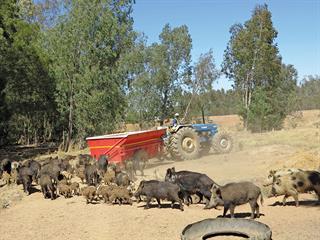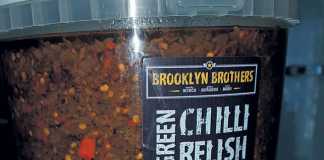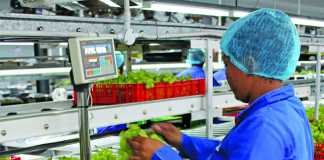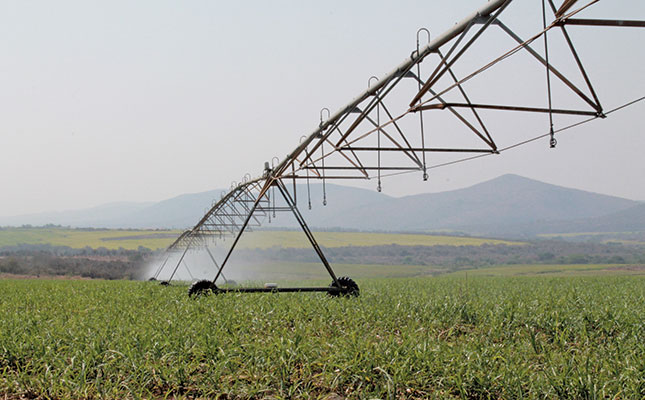
Grapes, wild boar, game and grass are an unusual farming combination. On Bontebok Ridge Reserve in the Western Cape, however, this mix of operations has proven to be ecologically and economically viable.
A family farm, Bontebok Ridge is situated at the foot of the Limietrivier Mountain near Wellington. It was originally purchased by LC Turner, whose son Frank, the current owner, began farming it in the mid-1960s. Like many other farms in the region, the land was mainly used to farm wine grapes. However, things took a less traditional turn when Frank’s son Tom joined him in 2008.
Tom had previously spent 17 years managing national parks and doing game capture in Africa, and brought with him fresh ideas for dual land use and a passion for farming with nature.
“The farm covers 600ha – 500ha of this is managed as a game reserve and 100ha is arable land,” Tom explains. “When I started farming, I took over the areas not being utilised and my father continued with the areas he’d always worked.”
The farm delivers grapes to Wellington Cellars 15km away.
“The price we receive per ton of grapes is not viable, and we had to think out of the box in terms of how to utilise the land differently and effectively.”

Father and son, Frank (left) and Tom Turner.
The grapes, on 30ha, cost as much to produce as they earn, says Tom.
“So, we’re not planting more wine grapes. Farming is an economic decision. I respect the old way of doing things, but we have to survive – and it comes down to the budget.”
Bontebok Ridge Reserve produces about 400t of grapes a year, which brings in R24 000/ ha to R30 000/ ha, and the operation needed a dual income from the land.
Why wild boar?
“We couldn’t put sheep in because they compress the soil, so I thought, why not use wild boar?” Tom recalls. “Thanks to these
animals, we’ve minimised our tilling to one disking to level the ground before the harvesting machine goes in, because they do the tilling in the vineyards for us.”
The animals come from Europe and were brought to South Africa many years ago to eat coddling moth in the pine plantations near Wolseley. In 2010, a farmer friend of Tom’s in Wellington offered him his domesticated wild boar, which he no longer had space for.
“We started with seven boar, and for the past three years, have harvested about 100 a year. It has grown exponentially. They’re not nearly as productive as domestic pigs because they have, on average, only four piglets per year. This is why our price is a bit higher for their meat, which is harvested sustainably and ethically.”
According to Tom, it does not make sense selling their wildlife on the hoof. “The rent they pay to be here is to sacrifice a few of their species every year.” He harvests the boar himself, using a silencer and without any stress to the animals. “This is happy, healthy meat. It’s never even seen a tarred road.”
Boars – useful on the land
The wild boar occupy land that had not been utilised in 50 years.“We can’t farm anything where there are alien trees – black wattle, blue gum and Port Jackson – because nothing grows there. It’s effectively a green desert, but the wild boar utilise this area well.”
In wet weather, the animals uproot the young saplings and eat them, contributing to managing the spread of black wattle. The boars are fenced off from September to February, when the vines are budding, but as soon as the harvesting machine is out of the vineyards the boars go in and clean up the leftover grapes, including any bugs and ants on the vines.
“We never have to spray for mealybug because the boars ‘till’ the ground. We don’t have slugs either. We only spray the vines for fungus, such as downy mildew,” says Tom.
According to Tom, there are no cons in having wild boar in the vineyards.
“The only thing we do is check the dripper lines after they have passed through, because they sometimes move these while burrowing.” During those times of the year when the boar are not allowed in the vineyards, they are fed surplus fruit which Tom collects from two export packing companies.
“They’ll eat whatever is available – from apples and plums to pomegranates and peaches. We collect the fruit in our grape bins and help the fruit packing company to dispose of their waste at no cost to them, and they help us feed the wild boar for free. We also make compost from any surplus fruit and use it on our roll-on lawn.”
When not in the vineyards, the wild boar are contained in 15ha camps. Fences are lined at the base with blue gum poles cut on the farm, which prevents them from burrowing under the wire. No electric fences are used and the boar have been successfully contained like this for the past five years.
The boar can easily be called into their enclosure, and Tom describes them as “Pavlov’s pigs”. They have been taught to associate either mealies or acorns with the ringing of a bell, and come running from all directions at the sound. Tom saw this practice work effectively on wild buffalo in Zambia.
He stresses that it is important to spend regular time with the animals, or they become too wild and are difficult to harvest.
“It’s a good business that has come about because we had no other option, and it has low input costs with good return. We market R30 000 to R40 000 worth of meat every two months, which over the year amounts to a fifth of our grape income. It’s really money for nothing.”
Grape production
Grapes are harvested in February for four weeks; 70% are harvested by machine and the rest by hand due to old low trellising. “Then we leave the vines to settle, give them water and let in the wild boar for about six months until mid-September. We then prune the vines and budding starts in September,” says Tom.

Wild boar clean up in the vineyards on the farm after harvest. According to Tom Turner, having wild boar in the vineyards is wholly advantageous – there are no cons to the animals’ presence.
Three sprays for downy mildew are applied from mid-September every three weeks. In mid-October lower buds are removed and the vines are tidied up. In November the tipping and topping starts to encourage the grapes to set.
“We do fertigation and give vines a bit of urea through the drip irrigation, but that’s it.”
Roll-on lawn: the main business
“For 50 years my father tried to kill the grass and weeds between the vines, but now we farm them and have been for five years,” says Tom. “We’re actually now pulling out vines and farming with weeds.” This practice began in an old vineyard that was cleared of vines. Instead of killing the grass, they mowed it.
“Now roll-on lawn is our main line of farming. We have 15ha, good soil and water, and it’s easy.”
While the wine market is extremely competitive, there is a great demand for roll-on lawn, says Tom.
“It’s a no-brainer. We have 150 000m² of roll-on lawn, which is kikuyu and cynodon, and we sell grass every day, about 2 000m² to 3 000m² per week. Our price is R40/ m², which translates into R400 000/ ha as opposed to R30 000/ ha for grapes. All we had to do was mow what was there; we haven’t bought a thing and we’re close to the markets in Wellington and Cape Town.”
Ecotourism
The forth division on the farm is the conservation and game area, which is open to tourists. There is also accommodation and a lapa for functions. The 500ha area is stocked with indigenous plains game, including bontebok, blue wildebeest, springbok, eland, grey ribbok and 20 quagga, which were bred as part of the quagga breeding project. All are sourced from the area and accustomed to the sourveld.
The farm is one of the first three in South Africa to register as a nature reserve in CapeNature’s Biodiversity Stewardship Programme. As such, the farm must be managed as a conservancy for at least 30 years, but preferably in perpetuity. “We have highly endangered rhenosterveld on the farm, so we never want it to be made into a golf course,” says Tom.
Invasive species are also being cleared from the farm’s river course.
“It’s now open, whereas it was impenetrable before. Soon it’ll be flowing its old course again.”
Relationships
Tom attributes Bontebok Ridge Reserve’s success to the good relationships it fosters with both its staff and clients. “A positive attitude makes all the difference. We don’t want to outsource. It’s exciting to do all our business with local people, and we mentor each other.”
Tom is the third- generation Turner to be on the farm, and many of the staff have also been here for three generations. He says he is determined to make a success of the farm in order to ensure that both his family and the families of his workers can continue earning a living from it.
“All our businesses are eco-friendly and interlinked. Many people are content with just doing what they always have, but we like to take a step back and see how we can work more fluidly. We’re not scared to try new things and talk about them, because what you talk about, you create.
“We work with passion and energy and like to under-promise and over-deliver.”
Email Tom Turner on [email protected]. Visit www.bontebokridge.com.













